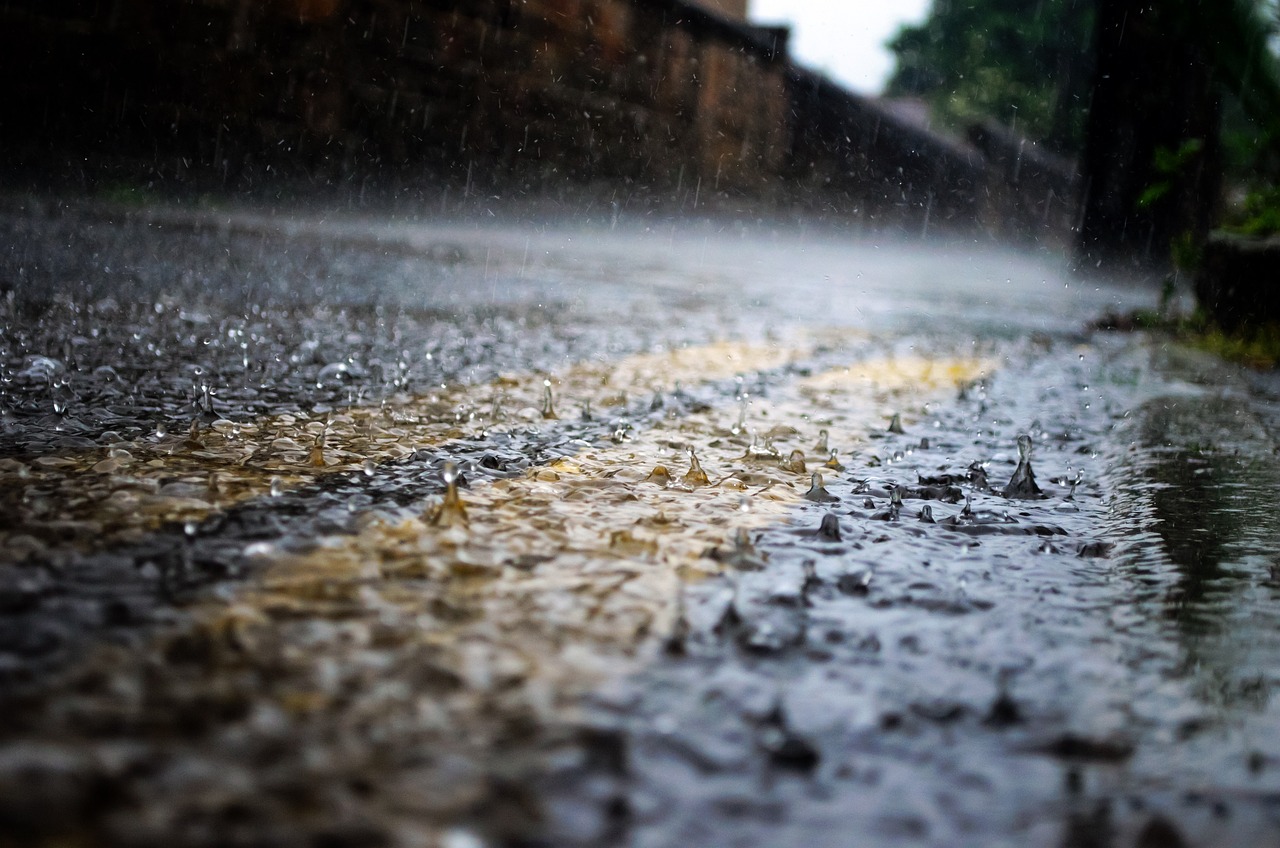Stormwater
- BMP / Best Management Practice: Activities or structural improvements that help reduce the quantity and improve the quality of stormwater runoff. BMPs include public education and outreach, treatment requirements, operating procedures, and practices to control runoff, spillage or leaks, sludge or waste disposal, or drainage from raw material storage.
- Combined Sewer System: A sewer system designed to convey both sanitary wastewater and stormwater.
- CWA / Clean Water Act: Amendments made to the Federal Water Pollution Control Act in 1972 to establish water quality standards and to create the National Pollutant Discharge Elimination System to protect the waters of the U. S. by regulating the discharge of pollutants from point source discharges and municipal separate storm sewer systems.
- Detention Pond: Pond that stores a volume of water for a given period of time and then discharges the water downstream.
- Discharge: An outflow of water from a stream, pipe, ground water system or watershed.
- Erosion: the overall process of the transport of material on the earth’s surface including the movement of soil and rock by agents such as water, wind, or gravity.
- Groundwater: all of the water contained in void space beneath the earth’s surface.
- Heavy Metals: Metals such as zinc, copper, lead, mercury, chromium, cadmium, iron, manganese, nickel, molybdenum and silver that, even in low concentrations can be toxic or lethal to humans, animals and aquatic life.
- Illicit Discharge: The term refers to any discharge to an MS4 that is not composed entirely of stormwater unless authorized via an NPDES permit or otherwise excluded from regulation. Thus, not all illicit discharges are illegal or prohibited.
- Industrial Waste: Unwanted materials from an industrial operation. It may be liquid, sludge, solid, or hazardous waste.
- MEP / Maximum Extent Practicable: a water quality standard that applies to all MS4 operators under NPDES permits. The standard has no exact definition, as it was intended to be flexible to allow operators to tailor their stormwater programs to their particular site.
- MS4 / Municipal Separate Storm Sewer Systems: Areas with a conveyance or system of conveyances (including roads with drainage systems, municipal streets, catch basins, curbs, gutters, ditches, man-made channels, and storm drains) that are not a combined sewer or part of a publicly owned treatment system and are owned or operated and regulated by a municipality or authorized agency. MS4s may be small, medium or large with the medium or large MS4s being principally determined by population size.
- NOI / Notice of Intent: An application to notify the permitting authority of a facility’s intention to be covered by a general permit. This exempts a facility from having to submit an individual or group application.
- NPDES / National Pollutant Discharge Elimination System: the EPA’s regulatory program to control the discharge of pollutants to waters of the United States.
- NPS / Non-Point Source Pollutants: pollution coming from many diffuse sources whose origin is often difficult to identify. This pollution occurs as rain or snowmelt travels over the land surface and picks up pollutants such as fertilizer, pesticides, and chemicals from cars. This pollution is difficult to regulate due to its origin from many different sources. These pollutants enter waterways untreated and are a major threat to aquatic organisms and people who fish or use waterways for recreational purposes.
- Nutrients: The term typically refers to nitrogen and phosphorus or compounds containing free amounts of the two elements. These elements are essential for the growth of plant life, but can create problems in the form of algal blooms, depletion of dissolved oxygen and pH changes in streams and other water bodies when higher concentrations are allowed to enter drainage systems and lakes.
- Ordinance: A law based on state statutory authority developed and approved by a governmental agency to allow them to regulate the enforcement of criteria contained within the specific law and to invoke sanctions and other enforcement measures to ensure facilities comply with the criteria.
- Outfall: the point where a sewer or drainage discharges into a receiving waterway.
- Point Source Pollution: pollution coming from a single, definable source, such as a factory.
- PWL / Priority Waterbodies List: A statewide inventory (database) of NYS waterbodies which characterizes water quality, the degree to which water uses are supported, progress toward the identification of water quality problems and sources, and activities to restore and protect each individual waterbody.
- Retention Pond: Pond that stores a volume of water without allowing it to discharge downstream.
- Runoff: any drainage that leaves an area as surface flow.
- Sanitary Sewer: an underground pipe system that carries sanitary waste and other wastewater to a treatment plant.
- Sediment: material derived from the weathering of rock such as sand and soil. This material can be detrimental to aquatic life and habitats if too much is allowed to wash into rivers and ponds.
- Site Plan: a geographic representation of the layout of buildings and other important features on a tract of land.
- SPDES / State Pollutant Discharge Elimination System: the state’s regulatory program to control the discharge of pollutants to waters of the Unites States.
- Storm Drain: any drain which drains directly into the storm sewer system, usually found along roadways or in parking lots.
- Storm Sewer: an underground pipe system that carries runoff from streets and other surfaces.
- Stormwater: stormwater or snow melt runoff, and surface runoff and drainage.
- Stormwater Management: any measure associated with the planning, maintenance, and regulation of facilities which collect, store, or convey stormwater.
- Surface Runoff: the flow of water across the land surface that occurs when the rainfall rate exceeds the ability of the soil to absorb the water. Also occurs on impervious surfaces, such as parking lots, where water cannot infiltrate at all.
- Surface Water: any water that remains on the earth’s surface, such as ponds, rivers, streams, impoundments, wetlands, oceans, etc.
- SWPPP / Stormwater Pollution Prevention Plan: A plan developed by a facility or entity that thoroughly evaluates potential pollutant sources at a construction site and selects and implements appropriate best management practice measures designed to prevent or control the discharge of pollutants in stormwater runoff.
- TMDL / Total Maximum Daily Load: a regulatory limit of the maximum amount of a pollutant type that can be released into a body of water in a twenty-four hour period without adversely affecting water quality.
- Tributary: a stream which drains into another larger stream or body of water.
- UA / Urbanized Area: Is a land area consisting of one or more central places and the adjacent densely settled surrounding area (urban fringe) that together have a residential population of at least 50,000 and a minimum average population density of at least 1,000 people per square mile.
- Waters of the US: These are surface waters defined as wetlands, lakes (including dry lakes), rivers, streams (including intermittent streams, ephemeral washes and arroyos), mudflats, sandflats, sloughs, wet meadows, playa lakes, natural ponds, and man-made impoundments.
- Watershed: a geographic area in which water flowing across the surface will drain into a certain stream or river and flow out of the area via that stream or river. All of the land that drains to a particular body of water. Also known as a catchment or drainage basin.




